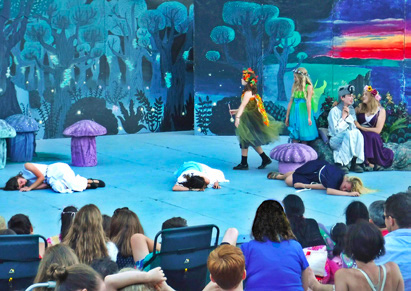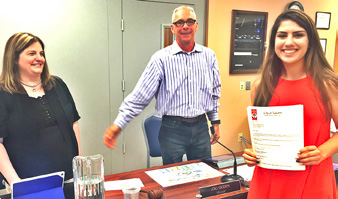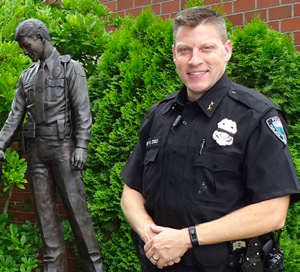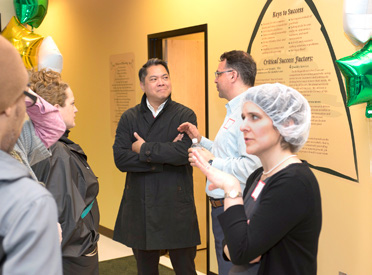BY REBECCA PRATT
Willowbrook Arts Camp is preparing to open its gates at Brown’s Ferry Park for a 36th summer in Tualatin providing hands-on experiences in the arts for children ages 3-18. Each day, campers freely choose their activities from a smorgasbord of offerings, led by their own muses to sample something new or focus on a favorite art form. They are supported in their creative endeavors by a talented and committed staff. No previous experience is necessary and theatre productions are open to all ages.
Willowbrook was recently awarded a Community Cultural Participation grant of $2,000 by the Cultural Coalition of Washington County to provide scholarships for children from the local Latino community. The CCWC contributes to the cultural identity and quality of life in Washington County and supports arts, heritage, and humanities by re-granting Oregon Cultural Trust funds that are managed by the Regional Arts and Culture Council. The Tualatin Arts Advisory Council also honored Willowbrook with an award of $400 to further extend art opportunities for Tualatin youth in 2016.
Althea Pratt-Broome, Willowbrook’s founder in 1982, wrote that “Imagination is the necessary ingredient for fully understanding our world. Willowbrook is a community where children may develop the confidence to express themselves uniquely.” Commitment to her ideal of nurturing the whole child remains at the core of Willowbrook’s approach, and thousands of children have become members of the Willowbrook community. Some teachers have been at the camp since the 1980s when it was located at Althea’s home, the historic John Sweek House. With an impressive return rate, early campers now bring their own children.
Willowbrook’s award-winning program includes the Squirrel’s Nest for ages 3-4; the Village, with ten centers ranging from puppetry to piano, for ages 5-7; and 27 Artisan centers, including fine and world arts, ceramics, basketry, puppetry, stained glass, music, nature, dance and drama, for campers ages 8-18. Scheduling is flexible, from one half-day to all six weeks. Weekly theater performances are free and open to the public. Willowbrook operates Monday through Friday from June 26 to August 4. Register or find out more by visiting www.willowbrookartscamp.org.
 Rebecca Pratt is program director of the nonprofit Willowbrook Arts Camp and daughter of camp founder Althea Pratt-Broome and was born and raised in Tualatin.
Rebecca Pratt is program director of the nonprofit Willowbrook Arts Camp and daughter of camp founder Althea Pratt-Broome and was born and raised in Tualatin.



 Loyce Martinazzi was born and raised in Tualatin and is passionate about Tualatin History. She is Co-Founder of the Tualatin Historical Society and Co-Author of Tualatin…From the Beginning.
Loyce Martinazzi was born and raised in Tualatin and is passionate about Tualatin History. She is Co-Founder of the Tualatin Historical Society and Co-Author of Tualatin…From the Beginning.
 Kim DeMarchi, M.Ed., Certified Parent Educator and Certified Family Coach, is a Tualatin resident, married with 16 year old boy/girl twins, and has been an educator for more than two decades. Kim is trained and certified through Positive Discipline, as well the International Network for Children and Families in a program called Redirecting Children‘s Behavior. Kim is active in supporting her local parenting community by providing workshops, coaching families and writing articles for our newspaper. Kim is a monthly guest on KATU’s AM Northwest. She also blogs twice a month for Knowledge Universe’s Kindercare online community. Kim’s goal for you is to help reduce conflict, foster mutual respect, and create deeper communication and connections with your loved ones. She can be reached through
Kim DeMarchi, M.Ed., Certified Parent Educator and Certified Family Coach, is a Tualatin resident, married with 16 year old boy/girl twins, and has been an educator for more than two decades. Kim is trained and certified through Positive Discipline, as well the International Network for Children and Families in a program called Redirecting Children‘s Behavior. Kim is active in supporting her local parenting community by providing workshops, coaching families and writing articles for our newspaper. Kim is a monthly guest on KATU’s AM Northwest. She also blogs twice a month for Knowledge Universe’s Kindercare online community. Kim’s goal for you is to help reduce conflict, foster mutual respect, and create deeper communication and connections with your loved ones. She can be reached through 



 Cathy Holland is a retired businesswoman and a 25- year resident of Tualatin. She is also is a member of board of directors of the Tualatin Community Police Foundation.
Cathy Holland is a retired businesswoman and a 25- year resident of Tualatin. She is also is a member of board of directors of the Tualatin Community Police Foundation.

 Jonn Karsseboom loves the science behind, under and around and in the garden. You may email him for no reason at all too:
Jonn Karsseboom loves the science behind, under and around and in the garden. You may email him for no reason at all too: 